QuestionWe have just bought two female Russian tortoises from a friend about four weeks ago. We live in NW PA, with hot summers and cold winters. When we received them, they were in a 15 gallon aquarium tank with a wood chip substrate. We bought a 31 gallon Rubbermaid type container with locks (we have two small kids). My husband cut out a 1'x2' portion of the top and zip-tied the old aquarium's screened tank cover on one side for easy adult access and drilled probably 15 holes into the upper portion of the sides for air circulation. We have not changed the lighting: a 24 " fluorescent all-glass aquarium, inc 19 watt 60 hz and a ballast with a regular 60 watt lightbulb in it for heating. The fluorescent bulb I am told is 3 years old. The regular light bulb is producing a good amount of heat. We are using play sand and roughly chopped timothy hay as a substrate now. They are eating a diet of pretty much any green leafy veggie, we feed them something new every day. For some reason, they will not eat dandelions from our yard. They are active and eating well, but I have noticed sand in one of the girls' poop. She is the smaller one and doesn't eat as much as the other. It's getting colder, but when the sun is bright and the air is warm we take them out in our yard (monitored closely, they are faster than I thought!) My questions are these: Is my substrate ok, especially given the sandy poop situation? Also, I heard from a friend that the fluorescent bulbs lose their UVB factor in a matter of weeks, so I'm suspicious of the lighting. And lastly, is our habitat large enough? If you can't tell we are new reptile owners and quite attached! Thanks so much and great work!
AnswerHi Jessica,
First of all, thank you so much for wanting to know how to take care of your tortoises properly. Too many people get them and then keep them in the wrong conditions, causing an early death or pretty miserable lives. I'm floored that your poor tortoises were being kept in a 15 gallon tank--that's far too small for even a 2" hatchling, let alone two adults! As you suspected, you do need to make a few changes to keep your tortoises happy and healthy. I'll go through everything step by step to make it easy for you.
Enclosure: The enclosure you're using is too small (sorry!), even for one tortoise. About the minimum would be 4 x 2 for one, 5 x 3 for two, and bigger is better. You can build a tortoise table, or use something like an old bookcase turned on its back and lined with thick plastic. They need something open, with good air circulation. You can make a screened top out of hardware cloth with a wood or PVC frame.
Substrate: I use a mix of 50% coir (bed-a-beast) and 50% playsand, deep enough for the tortoises to bury themselves. Keep it a little damp for humidity. Straight sand can lead to impaction (and doesn't hold the humidity), and hay will get moldy if it gets damp. Russian tortoises shouldn't be kept dry, as that can lead to dehydration and other health issues (in particular, bladder stones).
Lighting/UVB: If the fluorescent bulb ever gave much UVB, it's long depleted now; those bulbs are only good for about 6 months. I would recommend that you replace it with a combination heat/UVB bulb such as the T-Rex Active UVheat or ZooMed Powersun (you can order one at www.carolinapetsupply.com). I'd avoid trying to find a bulb in a pet store, because it can be difficult to find the right one (labels can be misleading) and usually more expensive than online. A combination bulb will give good levels of UVB for at least a year (see: http://russiantortoise.org/uvb.htm).
Basking temperature (measured by laying a thermometer on the substrate directly under the bulb) should be 90-95 degrees; cool area should be 70-75 degrees.
Water/Diet: They should have a shallow water dish large enough for them to get into completely, and should also be soaked 2-3 times a week. Diet for a Russian tortoise should be leafy greens; no fruit, veggies, or pellets. Good grocery greens: turnip, mustard, dandelion, collards, kale, spring mix/romaine (not too much lettuce as it's fairly low in nutrition). Good weeds: dandelion, chicory, sow thistle, plantain, mallow, chickweed, hawkbit. Flowers and other: prickly pear cactus, grape/mulberry leaves, rose petals, violas, nasturtiums, hollyhock, hibiscus, abutilon--anything from the garden should be free of chemicals. Dandelion flowers are usually a favorite. Put a cuttlebone in the enclosure so the tortoises can self-regulate calcium intake.
One last thing: until they're mature, all Russian tortoises look female. If yours are under 4.5", they may still turn out to be male.
The best website for information is www.russiantortoise.org. There's a link on the first page for joining the Yahoo RT group.
I know this is probably pretty overwhelming. If you have more questions, post back *privately* and I'll give you my email so you can ask as many questions as you need to. I think allexperts only lets you post back three times.

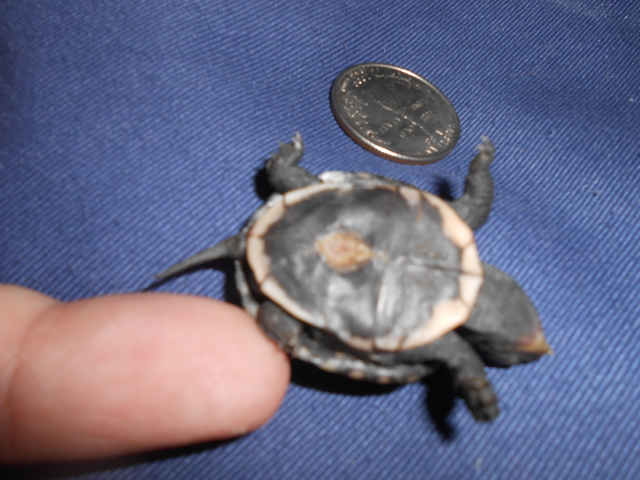 identifying a hatchling
Question
Turtle Turtle2
I found a turtle o
identifying a hatchling
Question
Turtle Turtle2
I found a turtle o
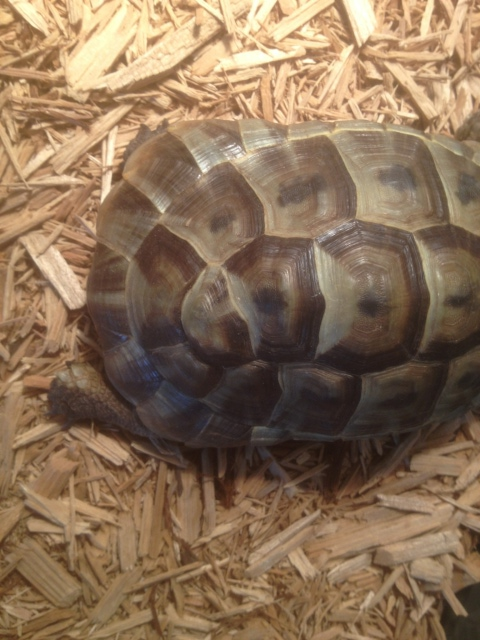 Greek tortoise shell question
Question
Tortoise shell 1 Tortoise shell 2
Greek tortoise shell question
Question
Tortoise shell 1 Tortoise shell 2
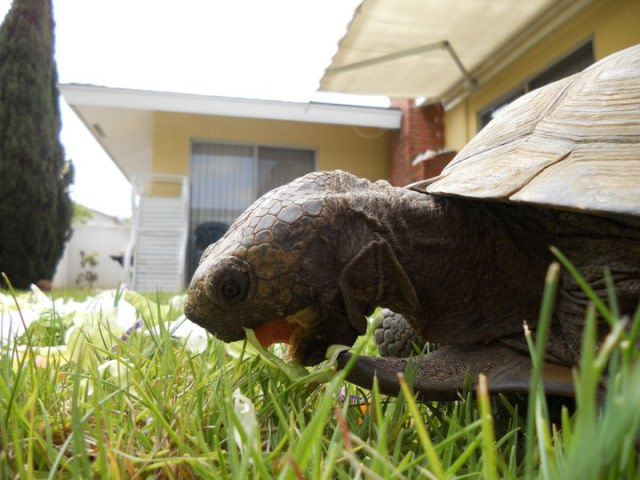 My 60 year old Turtle
Question
frank 3 weeks ago
Hello, two weeks ago
My 60 year old Turtle
Question
frank 3 weeks ago
Hello, two weeks ago
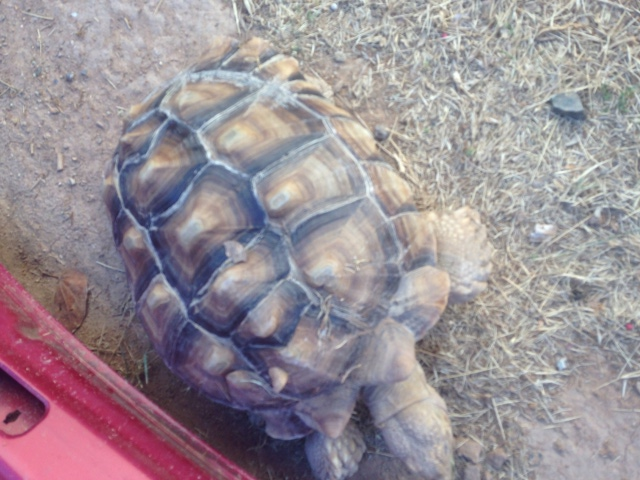 i need to know what kind of tortoise I have
Question
Tortoise
Im interested in buying a new
i need to know what kind of tortoise I have
Question
Tortoise
Im interested in buying a new
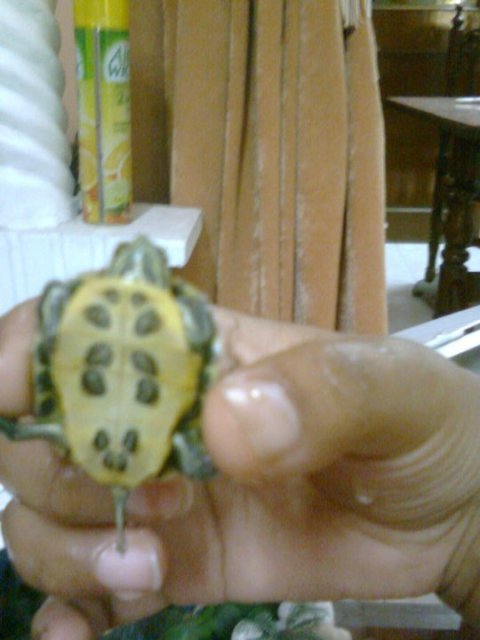 turles pregnancy...
Question
gangster
i have bought a red eared slider turt
turles pregnancy...
Question
gangster
i have bought a red eared slider turt